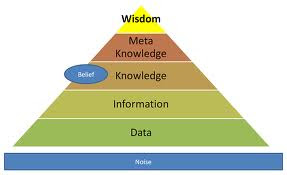Thursday, May 17, 2012
Synchronic Evolution—Bridge Connecting Science And Aesthetic Values
Preface And Preliminary Remarks--Structuralism Paper continued
April 1994
The lack of consensus concerning the nature, scope, and significance of
scientific knowledge suggests to me that we are at a turning point of major
historical proportions. This turning point has not come too soon. I hope it has
not come too late. I agree with Northrop's logical realist interpretation of
scientific knowledge and with the neo-Kantians (Cassirer, Margenau)
interpretation. However, in my thesis, I include a hierarchy of knowledge,
which, ultimately, must be understood as the philosophical and methodological
ground from which all knowledge follows.
Science and technology are regarded with the highest esteem, so much so that the
"good in society" and technological advancements are linked necessarily, but
that is not the only measure of a "good society." Take away the aesthetic values
of nurturing, generosity, compassion, kindness, and love etc., and the "good
society" wouldn't even exist. The hierarchy of knowledge that I am about to
suggest not only functions as a bridge connecting scientific knowledge to
"caring aesthetic values," it also speaks to the worst aspects of science and
runaway technology,-- the reduction of "goodness, love, and beauty" to
stimulus/response mechanisms, the dehumanizing of the humanities, and the
dehumanizing of humans.
From a structuralist perspective, my thesis holds that thoughts (scientific
knowledge being a subset of thought) and the physical world are both structured
along synchronic and diachronic axes. The concepts of synchronic and diachronic
are understood, typically, from a structuralist point of view; that is, the
synchronic perspective looks at a system, or structure, as a functioning given.
Investigations carried out from the synchronic perspective do not focus on the
change that is occurring within an object or institution; rather, the
investigation concentrates its focus on the a-historical condition that gives
rise to the present functioning of an object, institution or system.
Investigations carried out along the diachronic axis, on the other hand, focus
on the evolutionary currents that contribute to the ongoing change of everything
that is not considered synchronically. Traditionally, structuralists have chosen
to pursue their investigations along the synchronic axis while ignoring the
diachronic axis. In this paper I will investigate the heretofore ignored
possibility that the synchronic axis of investigation evolves diachronically. In
other words, if structure evolves into complex transformations of itself then
the diachronic experience of this evolving structure may indeed produce a
hierarchy of knowledge, -- a hierarchy of knowledge that will not only ground
scientific knowledge, but also ground ethical and spiritual knowledge as well
(spiritual knowledge being a subset ethics).
Subscribe to:
Post Comments (Atom)







No comments:
Post a Comment